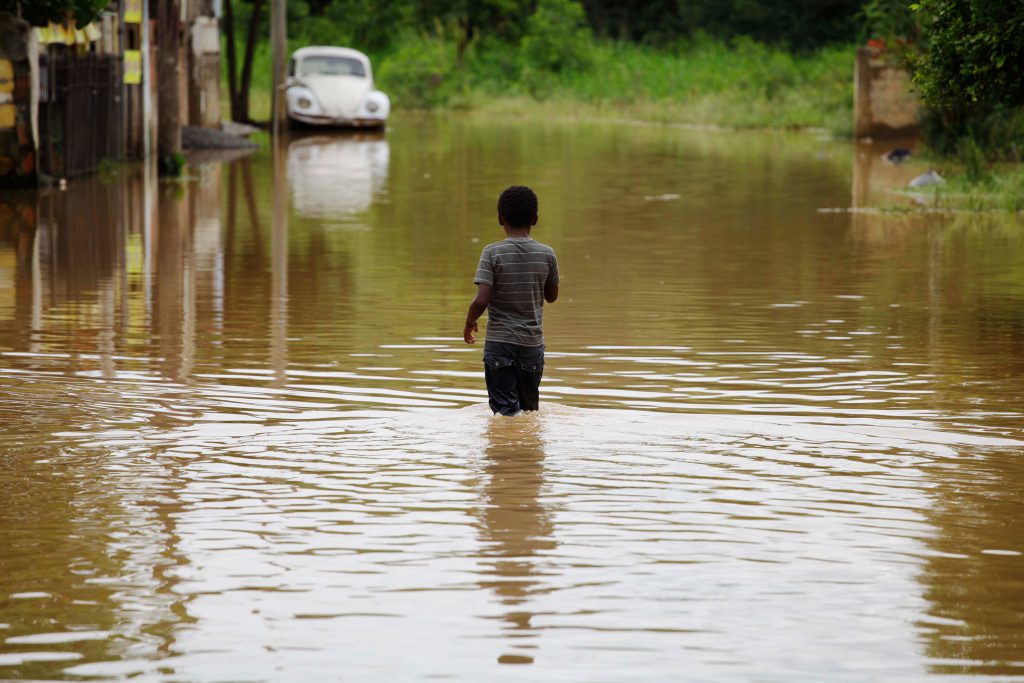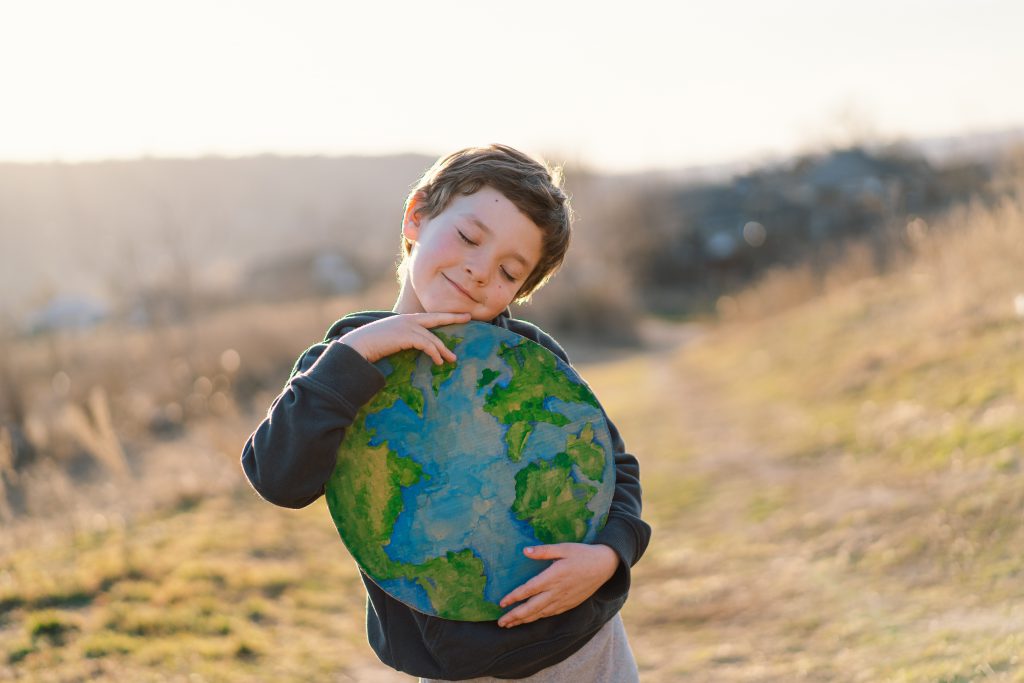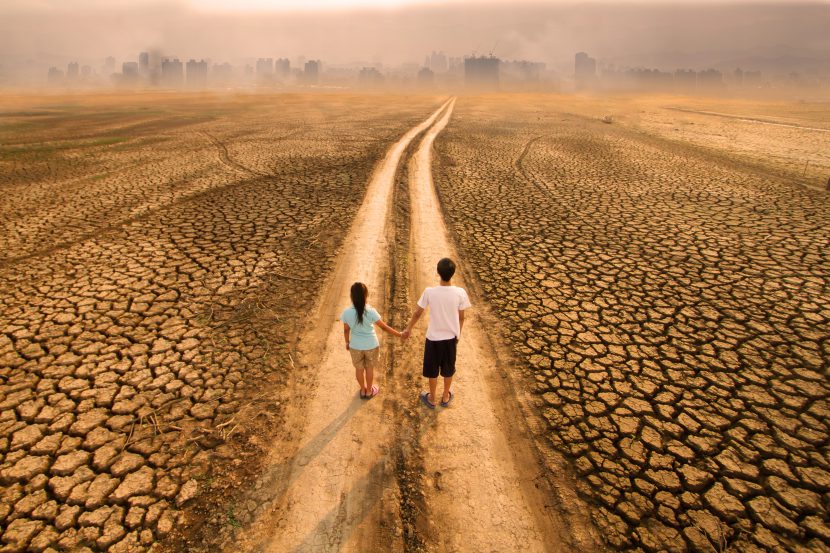The climate crisis is being addressed at the global, regional and national levels, through a wide range of high-level political commitments, treaties, resolutions, frameworks, policies and agreements. Despite all those initiatives and commitments, children are still left behind in policies and in mitigation and adaptation measures to address the climate crisis and the states’ failures to prevent and mitigate climate change harms is a form of violence against children which can be defined as a form of child abuse.
The impact of climate change on children
Climate change is the elephant in the room. Even if it is being addressed at the global, regional and national levels, through a wide range of high-level political commitments, treaties, resolutions, frameworks, policies and agreements, there are still many issues to target consistently and effectively to promote a shift in direction (EEAS, 2022).
Moreover, the global climate crisis has been driven primarily by wealthy nations’ industrialization and consumption, while its injuries fall disproportionately and most harshly on those who have least contributed to it: low-income nations and communities, Indigenous communities, communities of colour, and children (Climate Change is Child Abuse, 2022).
“We, the children demand for urgent action and solutions to climate change. We are the most affected yet least responsible for climate change. We also need to be included or consulted when coming up with the solutions. When we are included, we learn more and in our own small way are able to take action and engage in activities that address climate change like proper disposal of garbage and planting trees.”
– a 13-year-old girl from Kenya (EEAS, 2022)
At a global level, it is reported that one in five children worldwide currently doesnot have access to or enough water to meet their everyday needs. By 2041, one in four children islikely to live in areas of extreme high-water stress (Child Rights Connect, 2022). More children than ever are facing extreme poverty, discrimination and social inequalities and are forcibly displaced, fleeing conflicts, widespread violence and food insecurity (EEAS, 2022).
The climate crisis has aggravated these risks and it has exacerbated children’s vulnerabilities to violence. Children are more and more prone to experience weather events such as devastating floods, cyclones, air pollution, global warming, extreme weather events, desertification, deforestation, catastrophic droughts, heat waves, fires, storms, and related consequences.
According to UNICEF’s first child-focused climate risk index, 1 billion children are at extremely high risk of being affected by the climate crisis, of whom 820 million (over one-third of children globally) are currently highly exposed to heatwaves, 400 million (nearly 1 in 6) to cyclones, 330 million (1 in 7) to riverine flooding, 240 million (1 in 10) to coastal flooding, and 920 million (over one third) to water scarcity (EEAS, 2022).
The cumulative shocks of the climate crisis are exacerbating pre-existing inequalities and vulnerabilities, such as poverty, the socioeconomic impact of the Covid-19 pandemic, humanitarian and financial crises and armed conflicts, food insecurity and aggravating risk factors for experiencing violence, abuse and exploitation, child labour, child marriage, human trafficking and forced displacement (EEAS, 2022).
People and children from marginalized communities do not have enough knowledge and cannot adapt to climate change as well as other better-off children (Child Rights Connect, 2022). In this sense, the climate crisis is acting as a threat multiplier for violence against children (EEAS, 2022).
Climate destruction is a form of child abuse
Accumulating studies and real-world experience indicate that due to physical and developmental factors, children are the most vulnerable to death, illness, and injury from direct and indirect impacts of climate change (Climate Change is Child Abuse, 2022).
The detrimental effect of climate change on children has led many in the professional communities dedicated to children’s health, protection, and rights to classify government and corporate contributions to climate change and their failures to prevent and mitigate its harms as violence against children which can be defined as a form of child abuse (Climate Change is Child Abuse, 2022).

In fact, according to the World Health Organization, the definition of “child maltreatment” include “all types of physical and/or emotional ill-treatment, sexual abuse, neglect, negligence and commercial or other exploitation, which results in actual or potential harm to the child’s health, survival, development or dignity in the context of a relationship of responsibility, trust or power” (WHO, 2022).
By ratifying the United Nations Convention on the Rights of the Child (CRC), all countries (except the United States) have the responsibility to address such maltreatment of children by adopting all the appropriate measures on climate change which are based on what the best available science makes clear is necessary to protect children. These powerful actors should, therefore, be held accountable for perpetrating systemic violence against children (Climate Change is Child Abuse, 2022).
Actions taken by children to raise their voices on climate change
Children experience the consequences of climate change, and they are aware of the fact that the climate crisis will weigh most on them and future generations, as they have the most to lose. This is the reason why in the last years, children are increasingly making their voices heard and acting at the forefront of climate action worldwide, through legal actions, social media activity, community and civic engagement, participation in climate negotiations, child-led strikes, peaceful protests and social mobilization movements, despite the barriers they face (EEAS, 2022).
One of the best examples which demonstrate children’s commitment to the cause is the Friday for Future movement which was born in 2018 and has involved young people from all over the world.
Legal actions have also been taken to underline the strong connection between climate change and children’s rights. In fact, in 2020, Greta Thunberg and the 15 other child petitioners from twelve countries around the world, presented the first climate-related petition to the United Nations Committee on the Rights of the Child (CRC Committee) alleging that the failure of States to tackle climate change constitutes a violation of their rights protected by the CRC (Bakker, 2021).
“It’s so important that we speak up now because climate change affects us children the most. We need to demand that we’re going to be taken care of, us children. Because we are a priority, not a choice.”
– a 16-year-old girl from Greenland (CRIN, 2022)
More inclusion of children and youth in climate-related issues
Despite all these actions, children and youth are often absent from and ignored in policy discussions and global climate and human rights forums (CRIN, 2022). Recent research reports that young people feel abandoned and betrayed by adult disinterest and ineptness in dealing with this crisis that is profoundly threatening their current and future well-being (Climate Change is Child Abuse, 2022).
Children and youth need to be meaningfully included and given space to fully participate and defend their rights and interests in decisions affecting them and generations to come. They have the largest stake in the future and should be part of defining what it will be.
With less than eight years remaining to keep the promise of the 2030 Agenda, the clock is ticking. A paradigm shift is needed. Cooperation and multilateralism need to be strengthened, based on mutual partnerships and accountability, as most of the countries at greatest risk are those who are least responsible.
Justice for all children including social justice is needed more than ever, for all children, leaving no one behind. This requires joining forces and responsibilities with all key stakeholders including Member States and the private sector (EEAS, 2022).

In this sense, Humanium is on the front line to promote awareness of the dangers and causes of the climate crisis and to provide adequate responses to children and future generations on climate change. If you want to contribute to our cause, consider making a donation, volunteering or becoming a member.
Written by Arianna Braga
References:
Bakker, C. (2021). Baptism of fire? The first climate case before the UN Committee on the Rights of the Child. Retrieved from Questions of International Law (QIL) at http://www.qil-qdi.org/baptism-of-fire-the-first-climate-case-before-the-un-committee-on-the-rights-of-the-child/, accessed on 5 November 2022.
Child Rights Connect (2022). Saving the planet is saving children: Voices of Children for COP27 and beyond. Retrieved from Child Rights Connect at https://childrightsconnect.org/saving-the-planet-is-saving-children-voices-of-children-for-cop27-and-beyond/, accessed on 5 November 2022.
Climate Change is Child Abuse (2022). Climate destruction is child abuse. Retrieved from Climate Change is Child Abuse at https://climatechangeischi.wixsite.com/generations-together, accessed on 5 November 2022.
CRIN (2022). Children’s rights and voices in the global response to climate. Retrieved from CRIN at https://home.crin.org/readlistenwatch/stories/children-at-cop27, accessed on 5 November 2022.
EEAS (2022). The Climate Crisis: a Threat Multiplier for Violence against Children. Retrieved from the Delegation of the European Union to the United Nations in New York at https://www.eeas.europa.eu/delegations/un-new-york/climate-crisis-threat-multiplier-violence-against-children_en, accessed on 5 November 2022.
WHO (2022). Child maltreatment. Retrieved from the World Health Organization (WHO) at https://www.who.int/news-room/fact-sheets/detail/child-maltreatment#:~:text=It%20includes%20all%20types%20of,of%20responsibility%2C%20trust%20or%20power, accessed on 5 November 2022.


